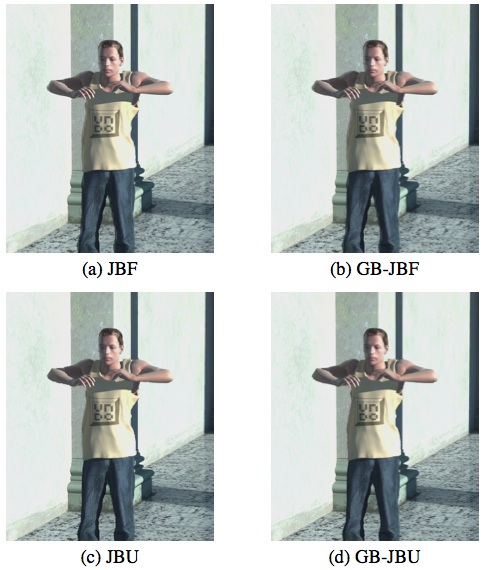TR2014-028
A graph-based joint bilateral approach for depth enhancement
-
- , "A Graph-based Joint Bilateral Approach for Depth Enhancement", IEEE International Conference on Acoustics, Speech, and Signal Processing (ICASSP), DOI: 10.1109/ICASSP.2014.6853724, May 2014, pp. 885-889.BibTeX TR2014-028 PDF
- @inproceedings{Wang2014may,
- author = {Wang, Y. and Ortega, A. and Tian, D. and Vetro, A.},
- title = {{A Graph-based Joint Bilateral Approach for Depth Enhancement}},
- booktitle = {IEEE International Conference on Acoustics, Speech, and Signal Processing (ICASSP)},
- year = 2014,
- pages = {885--889},
- month = may,
- publisher = {IEEE},
- doi = {10.1109/ICASSP.2014.6853724},
- url = {https://www.merl.com/publications/TR2014-028}
- }
- , "A Graph-based Joint Bilateral Approach for Depth Enhancement", IEEE International Conference on Acoustics, Speech, and Signal Processing (ICASSP), DOI: 10.1109/ICASSP.2014.6853724, May 2014, pp. 885-889.
-
MERL Contact:
-
Research Area:
Digital Video

Abstract:
Depth images are often presented at a lower spatial resolution, either due to limitations in the acquisition of the depth or to increase compression efficiency. As a result, upsampling low-resolution depth images to a higher spatial resolution is typically required prior to depth image based rendering. In this paper, depth enhancement and up-sampling techniques are proposed using a graph-based formulation. In one scheme, the depth is first upsampled using a conventional method, then followed by a graph-based joint bilateral filtering to enhance edges and reduce noise. A second scheme avoids the two-step processing and upsamples the depth directly using the proposed graph-based joint bilateral upsampling. Both filtering and interpolation problems are formulated as regularization problems and the solutions are different from conventional approaches. Further, we also studied operations on different graph structures such as star graph and 8-connected graph. Experimental results show that the proposed methods produce slightly more accurate depth at the full resolution with improved rendering quality of intermediate views.
